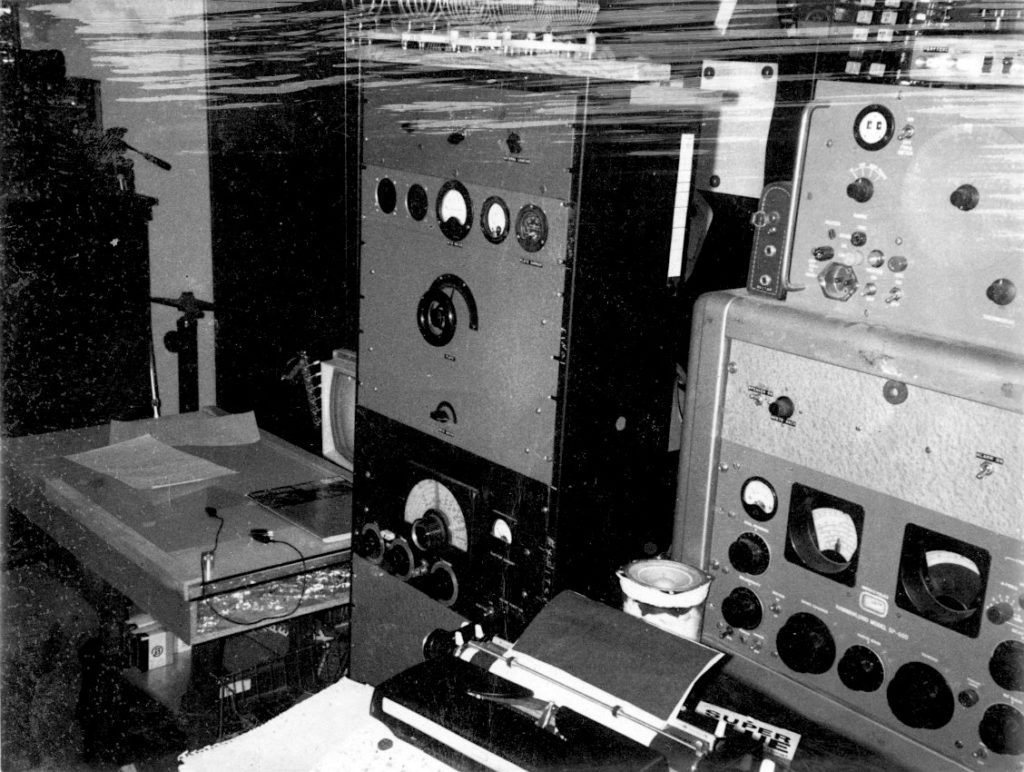
Geeky Dorm Room at Mountain Home AFB in 1972
Looking at these ancient photos now, I can see why I often got “written up” after room inspections. My bed, not shown here, was a crawl-in cave behind the workbench, and I had a cat named Bolivar living with me. The tall equipment rack was a homebrew HF transmitter with a pair of Eimac 100TH tubes in push-pull, and you can see my beloved Hammarlund SP-600 shortwave receiver to the right… along with Tektronix 531 scope, other test equipment, reel-to-reel tape deck, my shiny new $395 HP-35 calculator, and a typewriter that caused way more trouble than all the rest put together. There is also a homemade light table for doing Bishop Graphics printed circuit board artwork… I was designing a “scan synthesizer” to generate arbitrary waveforms, along with other projects. The tool board kept bench clutter under control, and over on the far wall in front of the small-parts cabinets are a Spectra-Physics 155 HeNe laser and a Hagstrom electric guitar.
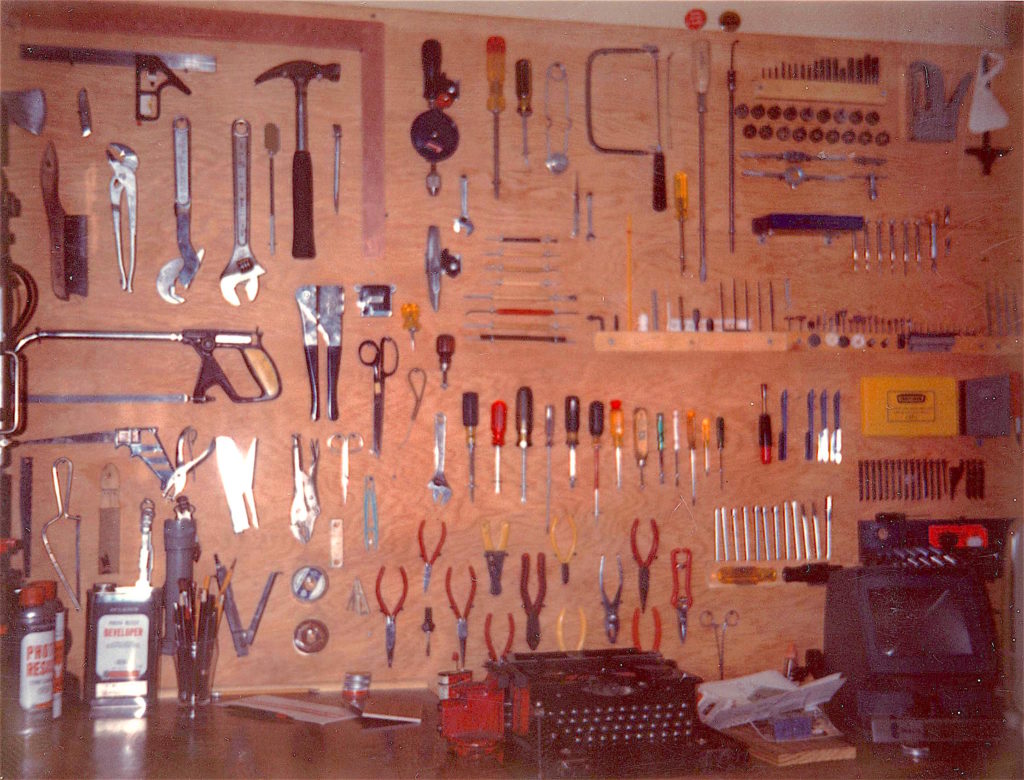
Good times, sorta… I was 19, full of crazy ambitions, and not exactly fitting in as an enlisted airman (my job was flight-line maintenance on F-111 avionics systems, then later test equipment repair in the Precision Measurement Equipment Lab). I was always getting nastygrams to clean up this mess, for some reason.
Here was the bench in July, 1972 – the black-and-white photos are from a few months later. This was also included in the Consoles of my Life collection.
The posting date is approximate, but this was late 1972. Click the photo below to embiggen and poke around…
One interesting detail is that TV partly visible above the light table, to the left of the ham transmitter. I used a dedicated stereo amp (driven by the same source feeding those peanut-butter jar acoustic suspension speakers) to drive the deflection yoke. Convergence drifted apart, but that was fine; the three beams were controlled by a color organ circuit that expressed three frequency ranges as colors. It was of course one texture that became tiresome after a while, but as a primitive light show in 1972 it definitely had its moments.
But the best visual brain toy was the He-Ne laser, which I used with a piece of cheap tripod-mounted glassware to do what I called “diffraction pattern ballet” to music. Many hours soaring through that space….
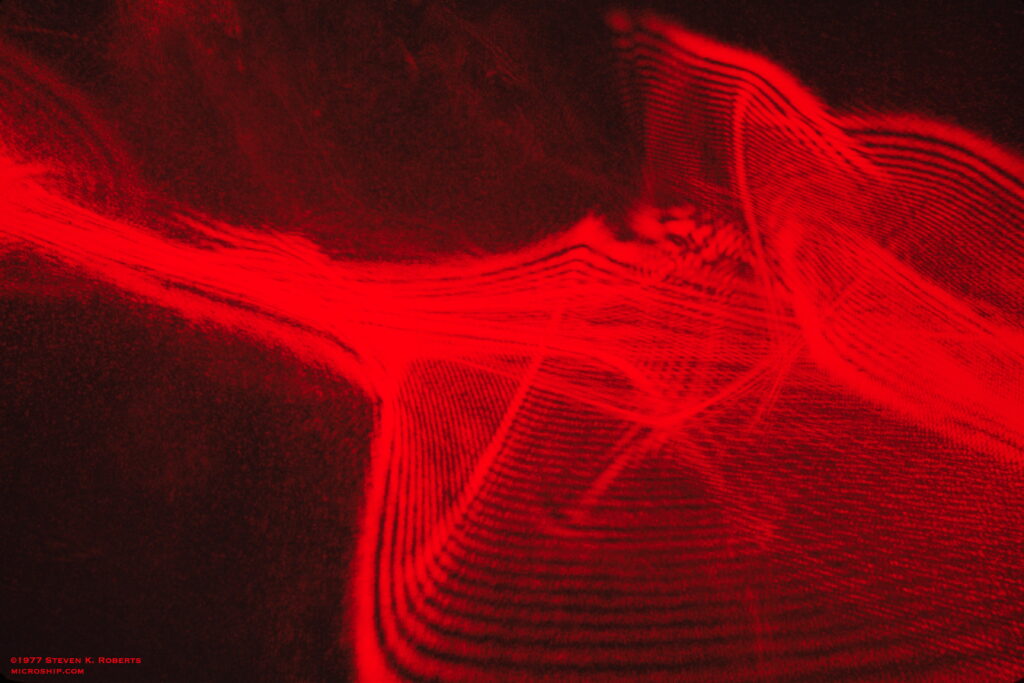
When I bought that 6-foot cabinet from a mil-surplus place in Boise, I dragged it back to the dorm room and painted it black before building in the big ham radio transmitter. It later became the enclosure for my homebrew 8008 system, following me around until I found a gorgeous sloping-panel home for my rack equipment. Here I was perched atop it, for some reason, contemplating the absurdity of my existence in early 1972:
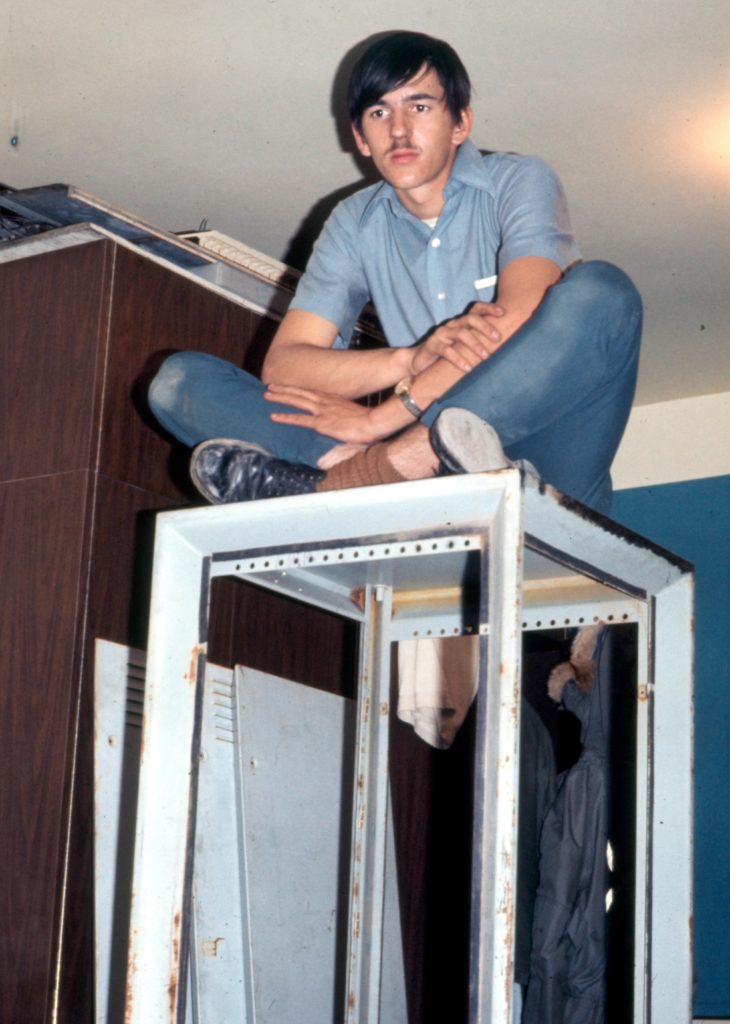
The HP-35 calculator was a thing of beauty and wonder… $400 in 1972 was a serious investment (I even kept it in a $25 locking security cradle sold by Hewlett-Packard). I was an early adopter, and when it turned out there was an incredibly obscure calculation error, I sent it back for surgery. The following snippet of text to my old friend Steve Orr turned up in the archives, written on 10 May, 1973:



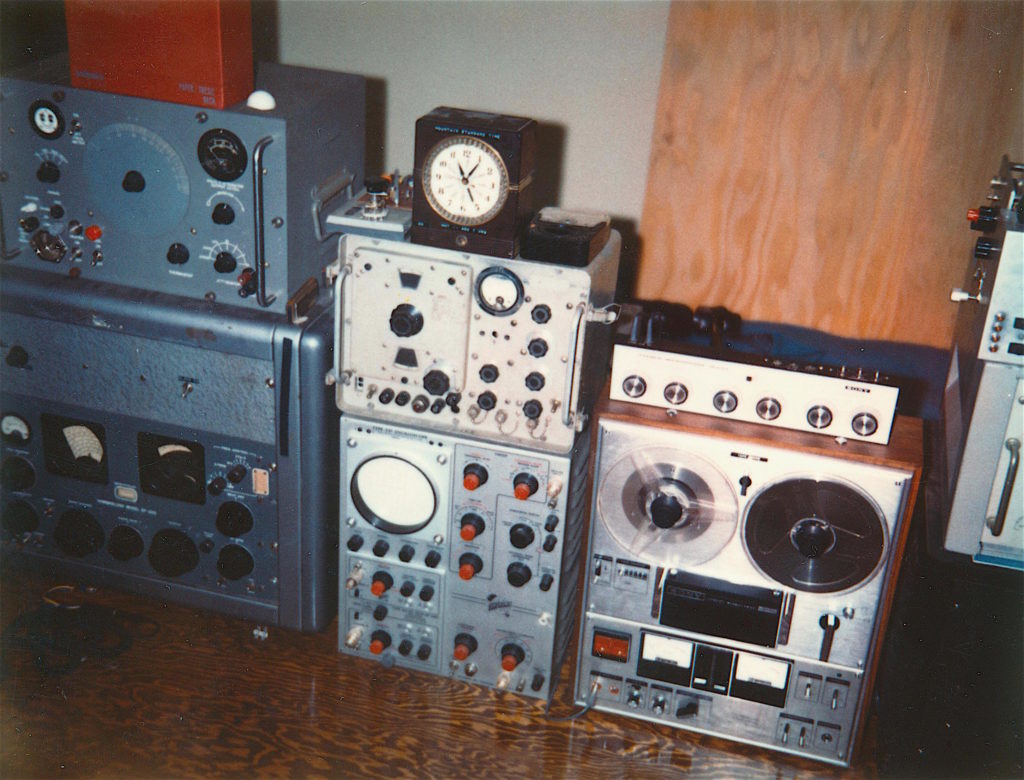
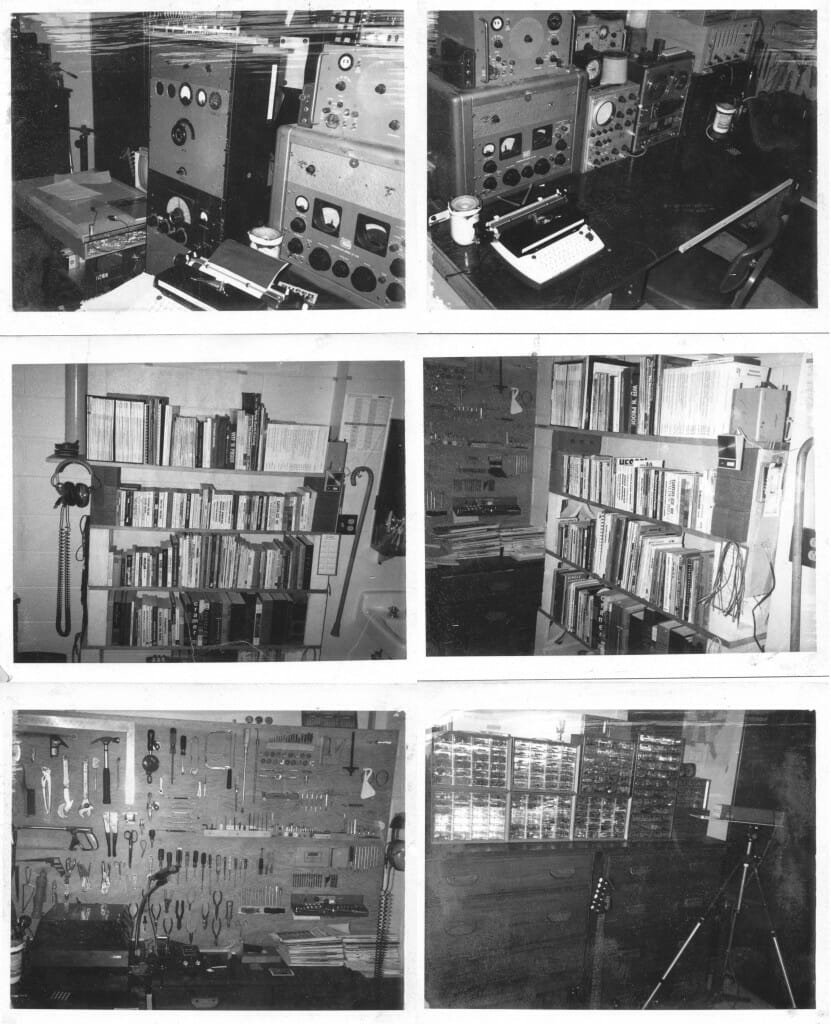
What mess?
Looks mighty tidy to me.